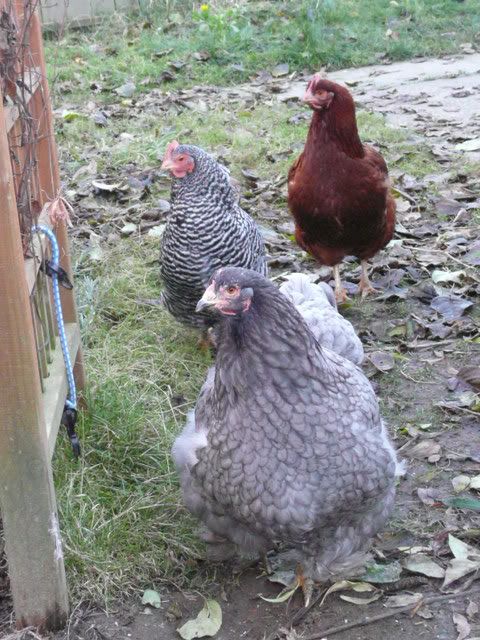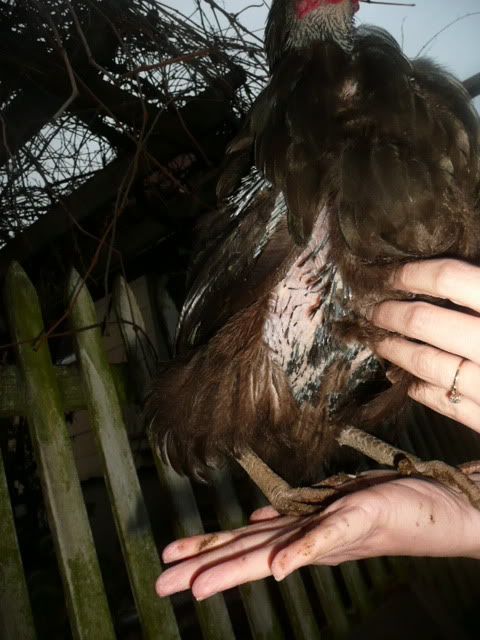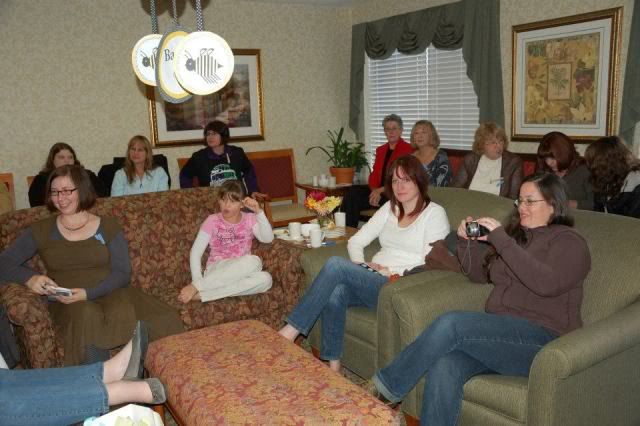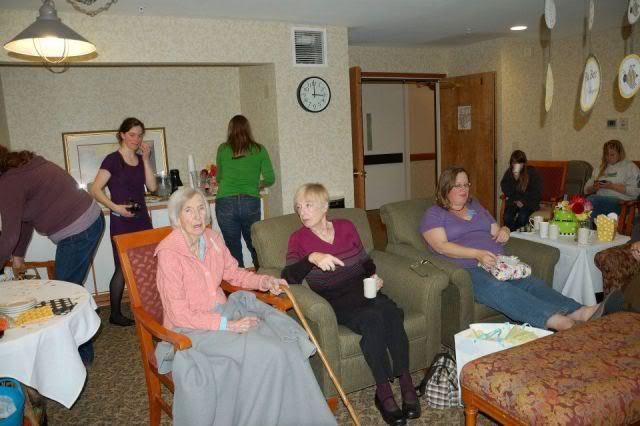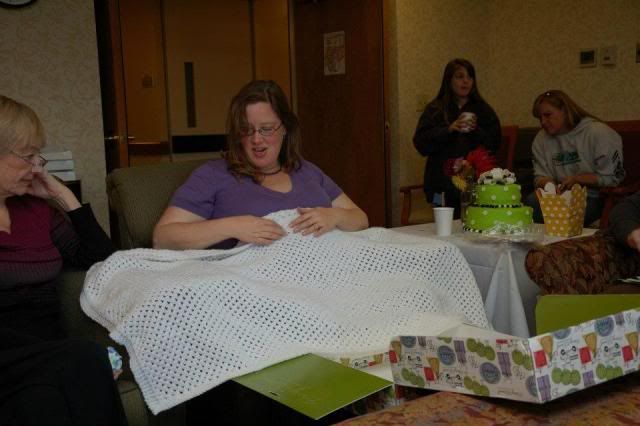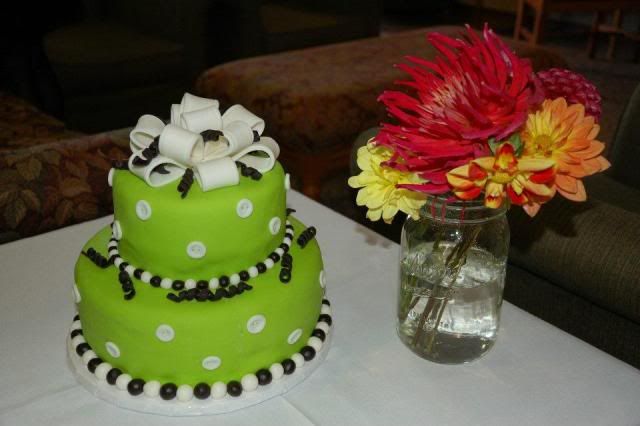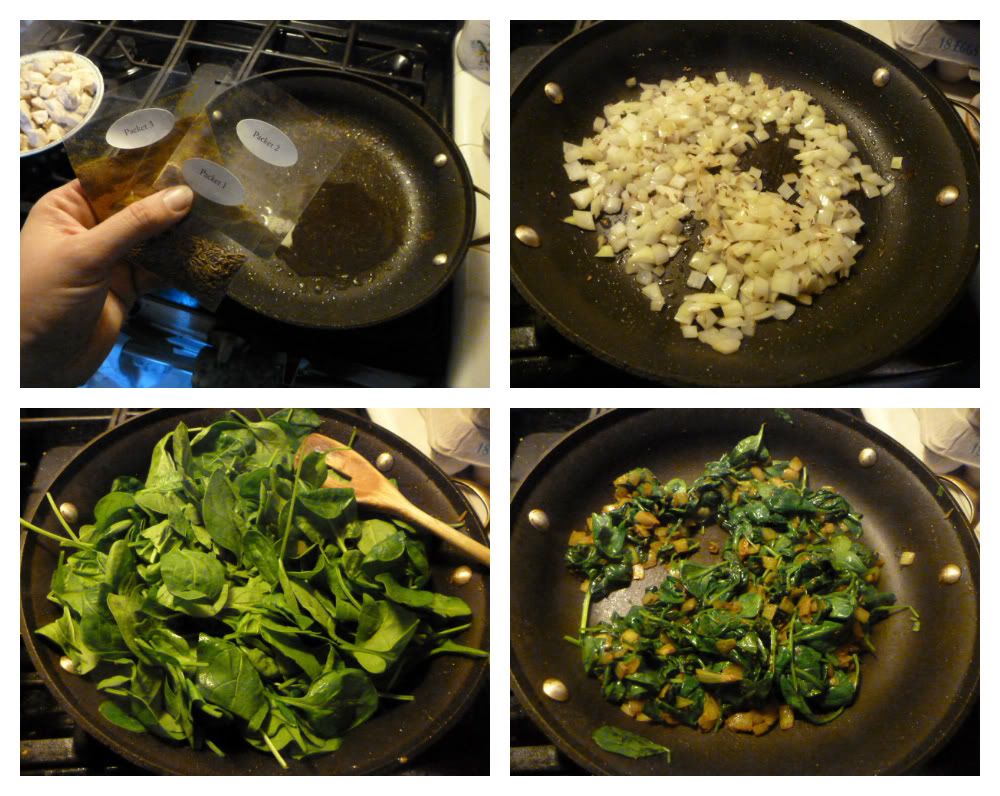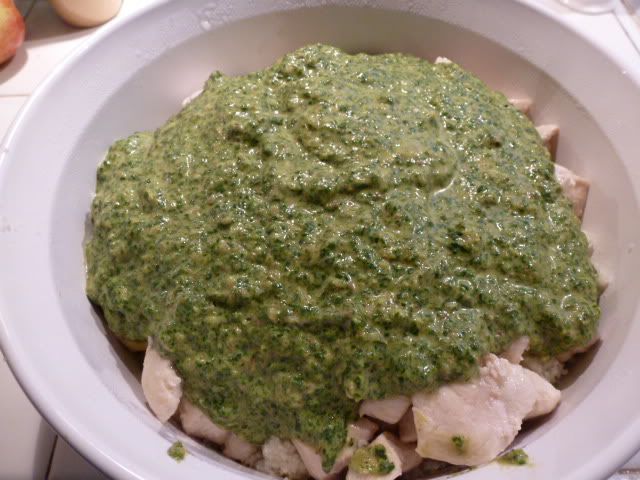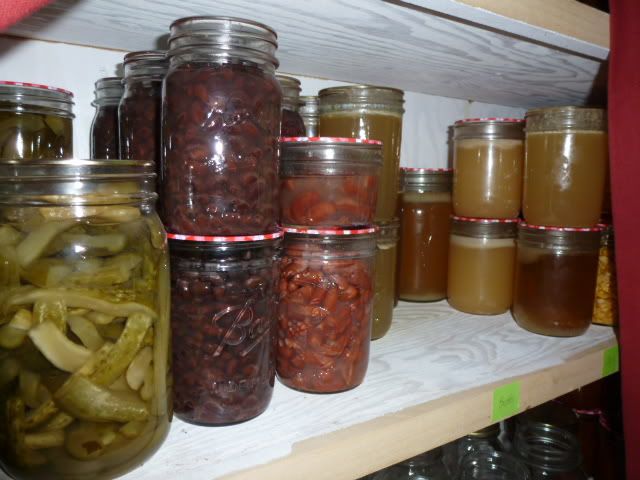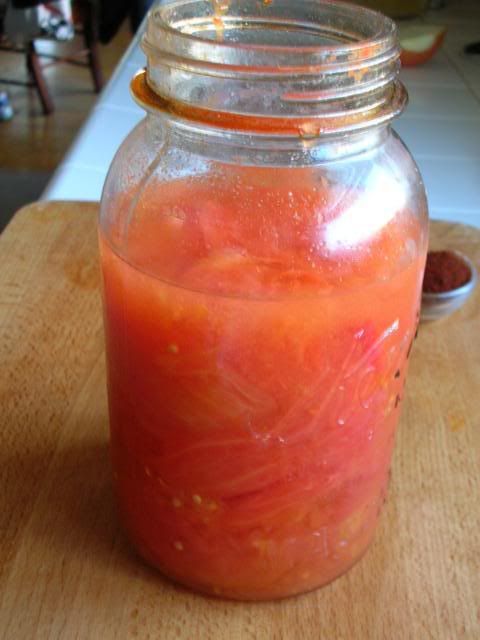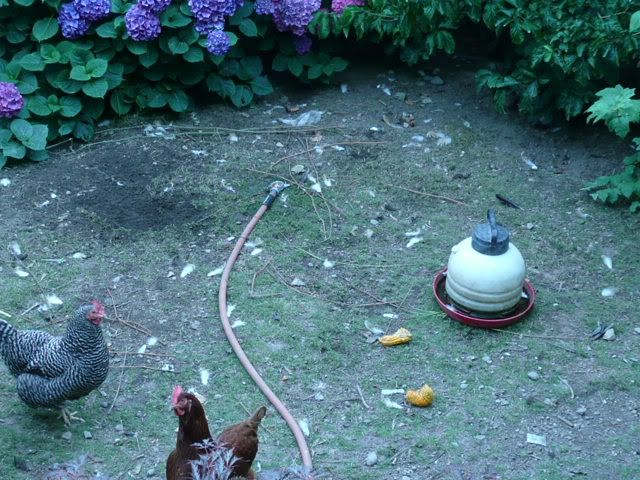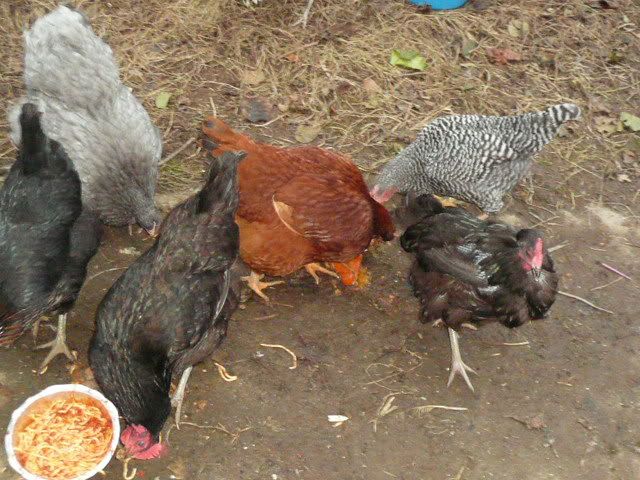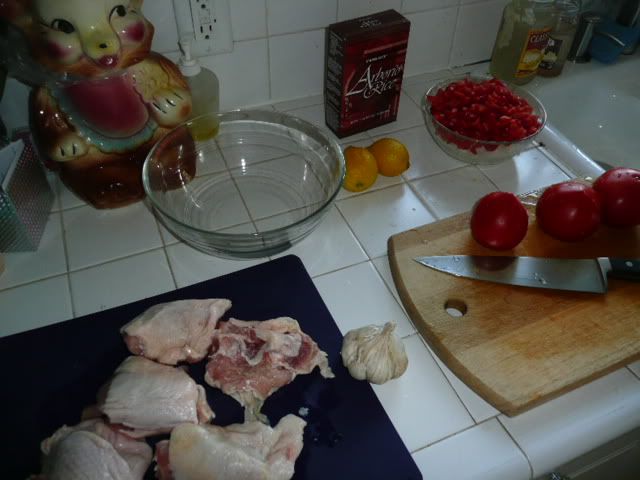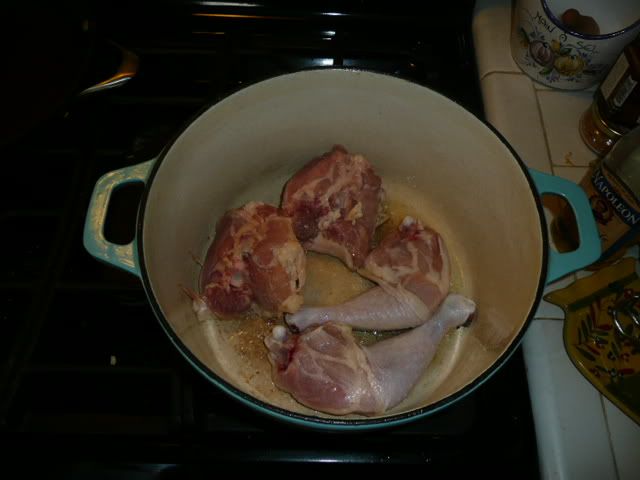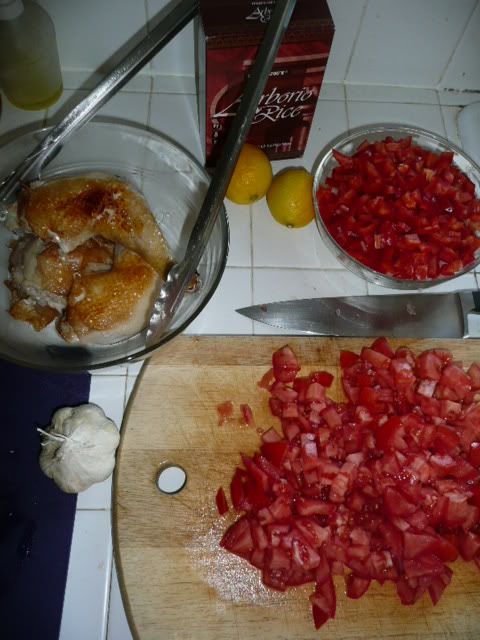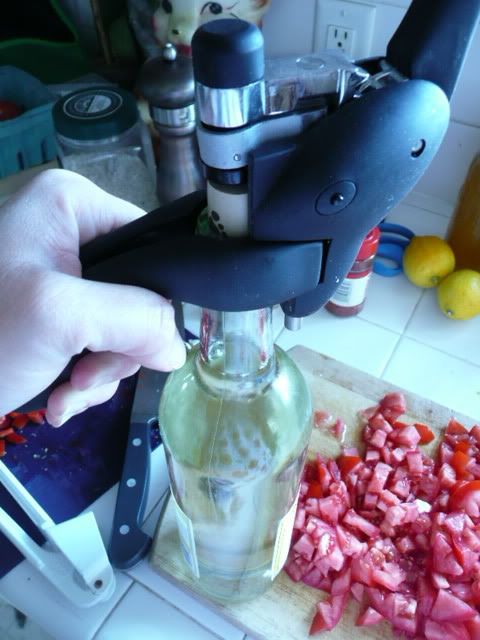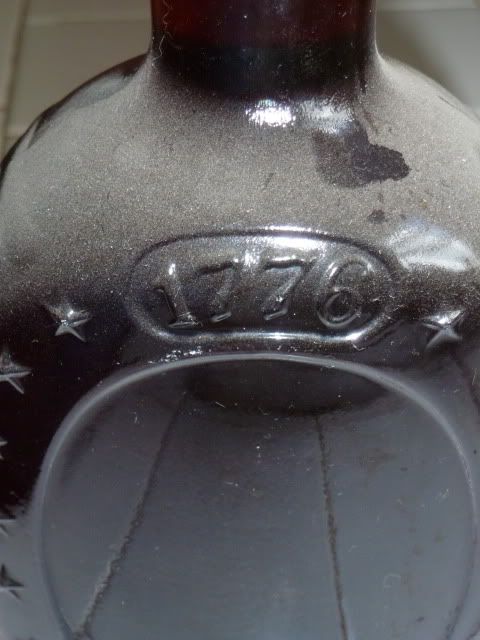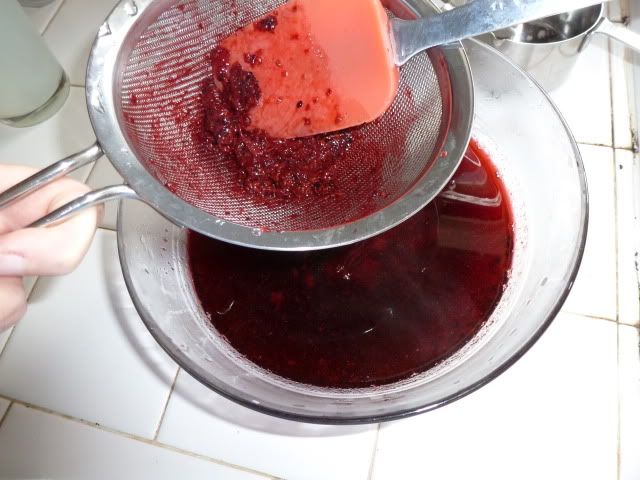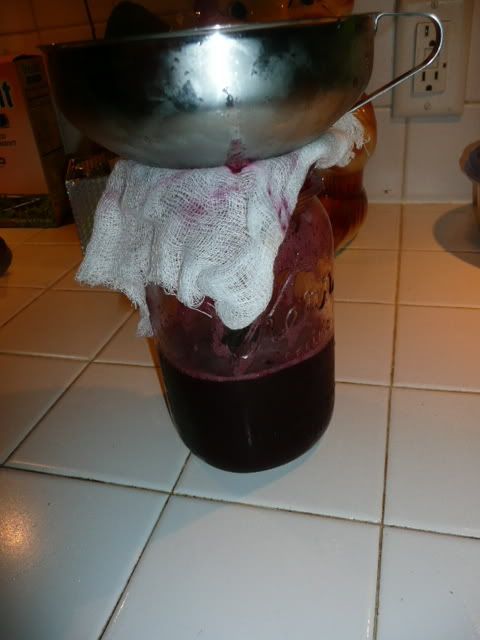I turned 37 yesterday.
Up until then I could tell people that I was
going to be 37 when Bean is born. No longer. Eeek. My late 30s are here. When you're 36 you're in the mid-30s... but 37. Wow. On top of that, I'm nearly done with my second trimester. Bean is due to be here in just over 3 months.
It was my final birthday as "Jenn". This time next year I'll be some variation of "Mom". I'm trying to savor my independence, spontaneity, and leisure to focus on a single task as long as I want - knitting, cooking, talking on the phone, chilling with Rosemary, etc. - while I still can. Once Bean is here, I expect that my idea of "free time" will drastically change.
I also know that in a year I'll have a hard time imagining our life without Bean.
It being my birthday, I started inviting people over. The next thing I knew, the dinner guest list was up to 10 people for dinner and another 4-6 for cake & ice cream.
I had most of the ingredients for a
Spanish paella (pie-AY-ya). I couldn't find the recipe a friend once gave me so I looked up a few variations online and winged it. This same friend, a former co-worker, used to loan me her paella pan. As I rarely see her since leaving that job - and my commute to Seattle - I had to make due with my Le Creuset wannabe (seriously - the Martha Stewart stuff is OK, but it's no Le Creuset).
The great thing about paella is that if you need to stretch it, add more rice. Paella suits my cooking sensibilities really well: you use what's on hand and call it good. I do it in a slightly different order than many recipes but the end result is about the same.
This is more of a
method for making paella and not so much a
recipe. Putting together a paella is not excessively time-consuming or difficult but it does take some prep and fore-thought.
Chop the ingredients for a sofrito. Everything should be about the same size.
1 onion
1-2 red or green bell peppers
1-2 tomatoes
4 cloves of garlic
Put the chopped stuff aside.
Brown the meat.
Heat about 2T olive oil in the largest pot or pan you have. Brown the meat in batches and put it into a bowl to set aside for later.
My freezer contained 8 chicken thighs, 2 thigh quarters, 2 pork chops, and chorizo. So that's what went into my paella. There are no hard and fast rules about which meats can go into a paella. One recipe I found called for a rabbit and a chicken. Do what you want.
This was the first time I'd put pork into my paella. I cut it into slices the seasoned it with paprika, salt, pepper, and oregano. I wanted it to taste distinct from the chicken, which is why I treated it this way.
If you have or can borrow a traditional
paella pan, go for it. I used an enameled cast iron pot with the most surface area I could muster. Paella is traditionally cooked outside in the grill but we were out of propane. It was inside on the gas flame for me.
Cook the sofrito.
Next you prepare the sofrito. Simply throw all the chopped sofrito ingredients into the pan (drained of extra fat if necessary) and cook them down until you gat a thick paste. This should take about 15-20 minutes and does not need constant monitoring.
After the sofrito is done you can either continue to the last stage or put it aside and wait to start up again about 30 minutes before you want to eat.
Season the sofrito and cook the rice.
All paellas, no matter their other ingredients, seem to agree on the sofrito as one of the mandatory components. The others are saffron, which gives the paella the traditional yellow color, and rice. Use a short-grain rice such as arborio.
At this point I added the seasonings:
1/2 tsp red pepper flakes (not traditional but it gave the meal a little kick)
1 tsp paprika
1/2 tsp salt
2 T oregano
generous pinch of saffron (Trader Joe's has one for around $6 per bottle)
Here's something I haven't done in a while:
Add your rice - I used 2 cups - and 4 cups of chicken broth. I added about 2 cups of a dry white wine at this stage as well. The end result was soupier than I'd meant it to be but the rice did eventually absorb the extra liquid. If you want less rice, adjust this quantity accordingly. Keep in mind that I was planning to feed 10 people with leftovers for lunch on Monday.
Stir this sofrito-rice mix well and bring it to a simmer. Tuck your browned meats into the rice, cover tightly, and cook on low for 20 minutes or until the liquid is absorbed.
Add seafood if wanted.
It seems that every photo you see of paella includes mussels. You can also add squid, scallops, shrimp, or cod at the last minute for other seafood flavors.
We bought a pound of mussels for something like $3.50. About 10 minutes before the rice was finished cooking I tossed them on top of the paella and replaced the lid.
 |
| Not my pic... I got busy & forgot to take a photo of the finished dish. |
Serve and enjoy. Offer wedges of lemon to squeeze over the plates.
We served the paella with a beautiful spinach salad a friend had made. We ate outside, crammed around a little table but enjoying the company. Gene told me that nearly everyone went back for seconds. There was a handful of little kids, all of whom quite enjoyed feeding their leftovers to the girls, one forkful at a time. The chickens, as you may imagine, did not object.
Paella goes well with beer or dry white wine. We all had lemonade and
blueberry shrub (which was shockingly popular!).
Here are some paella recipes that are less fly-by-the-seat-of-your-pants and have specific quantities
http://spanishfood.about.com/od/maincourses/r/seafoodpaella.htm
http://www.alicante-spain.com/paella.html

